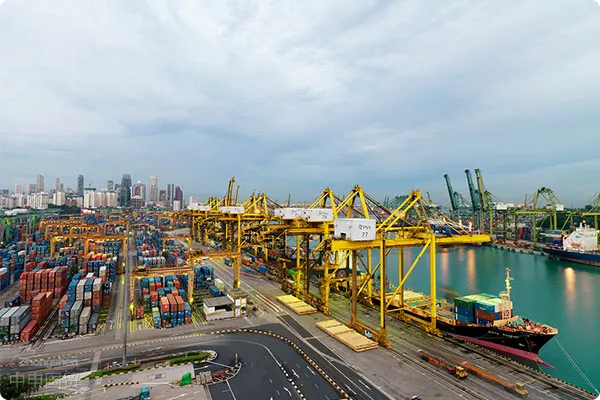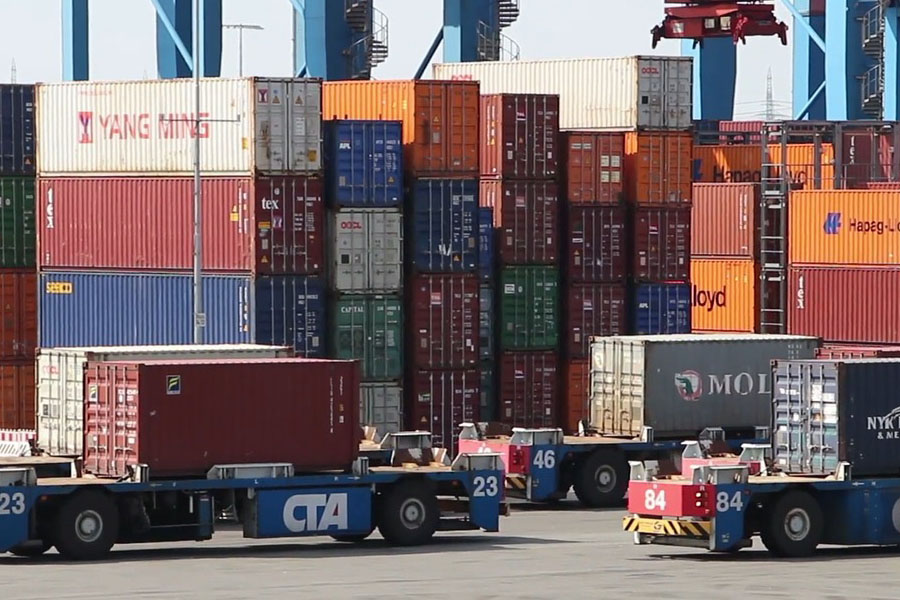- Shanghai Zhongshen International Trade Co., Ltd. - Two decades of trade agency expertise.
- Service Hotline: 139 1787 2118

Introduction
In the context of the continuous development of global trade, importing household lighting fixtures from Japan has become a choice for many businesses to expand their operations. However, the import process involves multiple steps, from document handling to logistics arrangements, from trade situation analysis to product certification, each of which is crucial. Next, we will provide a detailed explanation of the relevant matters regarding importing household lighting fixtures from Japan.
The Professional Approach to Document Processing
For importing Japanese household lighting fixtures, document processing is a fundamental and crucial step. First is the commercial invoice, which provides detailed information such as the description, quantity, and value of the goods, serving as a key basis for customs valuation and taxation. The invoice must clearly specify critical parameters of the lighting fixtures, including brand, model, wattage, and material, ensuring all information is accurate and error-free.
The Bill of Lading (B/L), as a crucial document for cargo transportation, must strictly correspond to the actual condition of the goods. When filling out the bill of lading, details such as the shipper, consignee, and notify party must be accurate, and the packaging and marks of the goods should also be truthfully reflected. For example, if lamps are packed in cartons, the dimensions and quantity of the cartons, as well as the number of lamps in each carton, must be clearly indicated.
The packing list provides further details on the packaging of the goods, specifying the types, specifications, and quantities of the lamps in each box, which facilitates customs inspection and the consignee's inventory check. Additionally,It is recommended to verify through the following methods:The Certificate of Origin (CO) is crucial for enjoying tariff preferences under specific trade agreements. If Japanese lighting fixtures meet the requirements of the relevant agreements, obtaining a valid CO can reduce import costs.
During the document processing, it is advisable to communicate with suppliers in advance to clarify the specific requirements and formats of the required documents. Additionally, establish a dedicated document review position to conduct multiple thorough checks on received documents, avoiding cargo delays or additional costs due to document errors.
Strategies and Key Points of Logistics Arrangement
The logistics process directly impacts the efficiency and cost of cargo transportation. When importing household lighting fixtures from Japan, common transportation methods includeMaritime TransportationandAir Transportation. Sea freight is suitable for large-volume cargo transportation with relatively low costs, but the transit time is longer. Taking the route from Tokyo Port in Japan to Shanghai Port in China as an example, the sea freight time is approximately 2–5 days, depending on factors such as shipping schedules and weather conditions.
When selecting ocean shipping, it is essential to choose a reputable shipping company, paying attention to its route coverage, schedule reliability, and vessel equipment conditions. Additionally, plan the transportation time wisely to avoid delays caused by holidays, port congestion, and other factors. For instance, the period from October to December each year is the peak shipping season, with busy port operations, so it is advisable to book cargo space in advance.
Air freight is suitable for small batches of urgently needed goods, offering fast transportation speeds but at a higher cost. The air freight time from Japan to major cities in China typically ranges from 1 to 2 days. When opting for air freight, it's important to consider the cargo handling capacity and service quality of the airline to ensure that the lighting fixtures are not damaged during transit.
In terms of logistics packaging, lighting fixtures are fragile items and must be properly protected. Use cushioning materials such as foam or bubble wrap to wrap the fixtures, then place them in sturdy cardboard boxes filled with sufficient padding. For large lighting fixtures, custom wooden crates may be necessary to ensure safe transportation.
Russian market and VTBFX Settlement AgencyAdvantages
If the imported Japanese household lighting fixtures are intended for sale in the Russian market, the convenience of VTB foreign exchange settlement cannot be overlooked. VTB Bank is a major financial institution in Russia, boasting an extensive business network and rich experience in the field of international settlements.
The foreign exchange settlement process is roughly as follows: After the goods arrive in Russia and customs clearance is completed, the importer and supplier finalize the transaction. The supplier then submits the relevant documents to the bank, which, after verifying their accuracy, converts the foreign exchange into local currency and disburses it to the supplier. Conducting foreign exchange settlement through VTB Bank offers advantages such as relatively faster processing speeds, enabling more timely fulfillment of corporate working capital needs. Moreover, VTB Bank has an in-depth understanding of local trade regulations and financial policies in Russia, allowing it to provide professional solutions when handling complex transactions, thereby reducing settlement risks. For instance, when dealing with goods subject to Russia's special trade controls, VTB Bank can assist companies in completing the foreign exchange settlement process in compliance with regulations.
Southeast Asian Marketimport and exportProcess and Solution
Import Process
First is the procurement of goods and contract signing. Clarify the specifications, quantity, price, delivery period, and other terms of the lighting fixtures with the Japanese supplier, and sign a detailed sales contract. The contract should specify quality standards, inspection methods, dispute resolution clauses, etc., to protect the rights and interests of both parties.
Subsequently, arrange for cargo transportation and insurance. Select the appropriate mode of transport based on the nature of the goods, such as sea or air freight as mentioned earlier. At the same time, purchase transportation insurance (Marine Insurance/Air Insurance) for the goods to mitigate potential risks during transit, such as damage or loss of cargo. Carefully review the insurance terms to clarify the scope of coverage and claims procedures.
After the goods arrive at the destination port in Southeast Asia, they enter the customs clearance process. It is necessary to prepare documents such as commercial invoices, bills of lading, packing lists, and certificates of origin, and declare them to the local customs. Customs policies vary among Southeast Asian countries. For example, Indonesian customs has relatively strict certification requirements for imported lighting fixtures, and may require relevant safety certifications and quality inspection reports. Therefore, it is crucial to understand the customs regulations and policies of the destination country in advance to ensure that all documents are complete and compliant. Once the customs inspection confirms that the goods are correct, the corresponding tariffs and value-added taxes can be paid, and the customs clearance and cargo pickup can be completed.
Solutions
To address the complex customs policies and trade regulations in the Southeast Asian market, it is recommended that companies establish long-term partnerships with local customs brokers or freight forwarding firms. These partners are familiar with local conditions and can promptly track policy changes, assisting businesses in efficiently completing customs clearance procedures. Additionally, companies should enhance communication with suppliers to ensure product quality meets Southeast Asian market standards. Product inspection clauses can be stipulated in contracts, requiring suppliers to provide inspection reports from third-party testing agencies to mitigate quality risks.
Challenges and Opportunities in the Current International Trade Landscape
The current international trade situation is complex and volatile, posing numerous challenges to importing household lighting fixtures from Japan. The rise of trade protectionism has led various countries to implement a range of trade restrictions, such as raising tariffs and establishing technical trade barriers. For instance, some nations may impose stricter requirements on the energy efficiency standards and electromagnetic compatibility of imported lighting fixtures. This necessitates additional investments by companies in product testing and certification to meet market access conditions.
Exchange rate fluctuations also pose a significant challenge. The instability in exchange rates between the yen, the renminbi, and other major currencies may lead to increased import costs or compressed profit margins. When signing trade contracts, companies may consider adopting appropriate exchange rate risk management tools, such as forward foreign exchange contracts or foreign exchange options, to lock in exchange rates and mitigate currency risks.
However, challenges also bring opportunities. With the gradual recovery of the global economy, consumer demand for household lighting fixtures continues to grow, particularly for high-quality, energy-efficient, and environmentally friendly products, which has become even more prominent. Japan possesses advanced technology and craftsmanship in the field of lighting manufacturing, and importing Japanese lighting fixtures can meet the market's demand for premium products. Meanwhile, the rapid development of e-commerce provides import businesses with broader sales channels, throughCross-border E-commerceThe platform enables direct engagement with global consumers, expanding market share.
Product certification service-related matters
Importing Japanese household lighting fixtures involves different product certification requirements for various markets. In Southeast Asian markets, such as Malaysia, fixtures may need to pass SIRIM certification to ensure compliance with local safety and quality standards. In Russia, lighting fixtures must obtain GOST-R certification to demonstrate conformity with Russian technical regulations.
Although our companyZhongShen International TradeWe do not directly provide certification services, but we will fully assist our clients. We will provide detailed explanations of certification requirements and procedures, offer information on relevant certification bodies, and assist clients in preparing the necessary documentation for certification. For example, we help clients organize technical parameters, product manuals, and other documents for lighting fixtures to facilitate the smooth submission of certification applications. Additionally, we will monitor the certification progress and provide timely updates to clients, ensuring efficient advancement of the certification process.
Conclusion
Importing household lighting fixtures from Japan involves multiple aspects such as document processing, logistics arrangements, foreign exchange settlement, trade situation analysis, and product certification. Through professional operations, reasonable planning, and an in-depth understanding of the market, enterprises can effectively address various challenges, seize opportunities, and ensure the smooth development of import operations. It is hoped that the information provided in this article will offer valuable reference for your process of importing household lighting fixtures from Japan.
Related Recommendations
? 2025. All Rights Reserved. Shanghai ICP No. 2023007705-2  PSB Record: Shanghai No.31011502009912
PSB Record: Shanghai No.31011502009912










